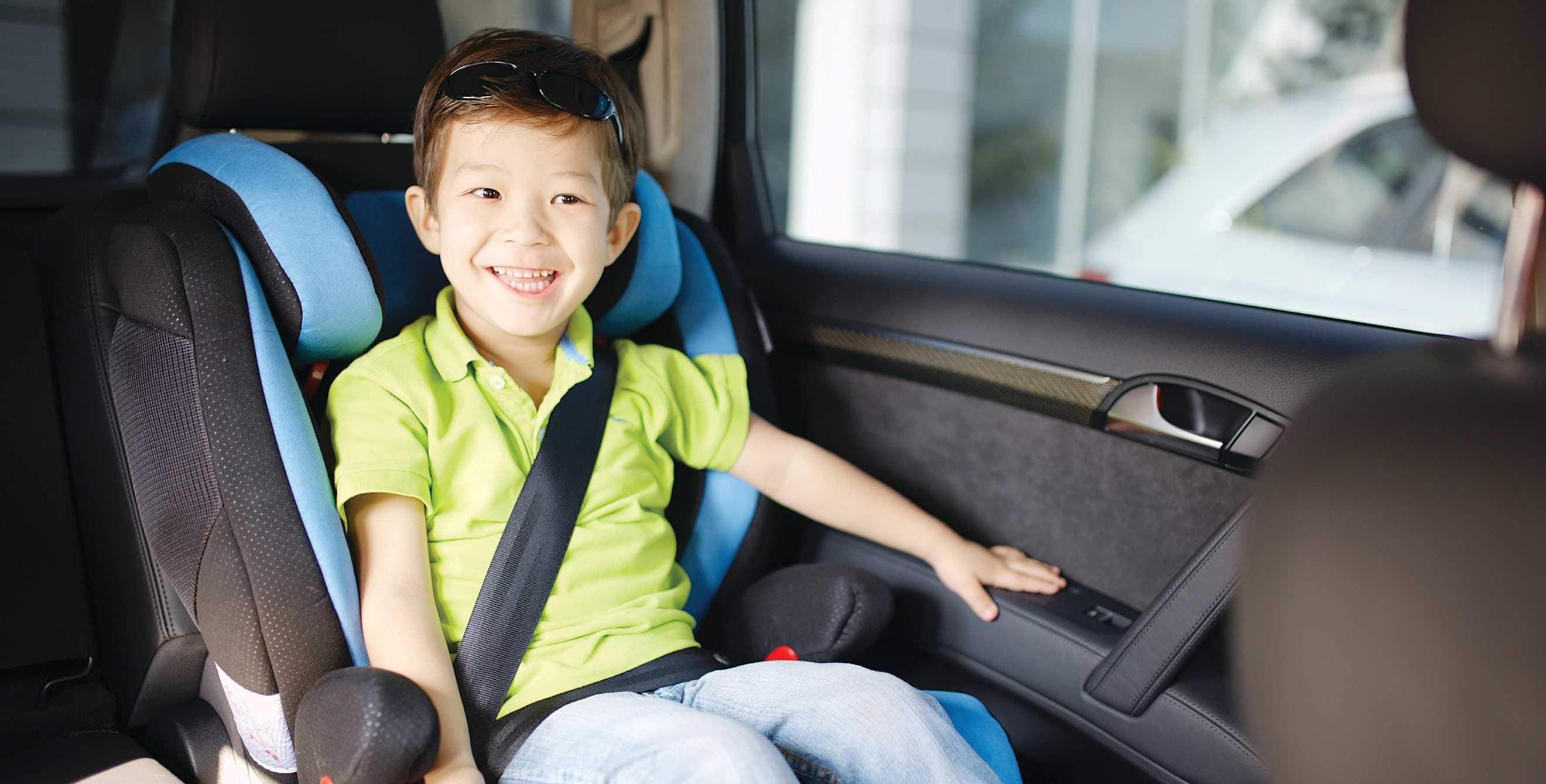
Child Passenger Safety 101
Here are the basics on how to keep kids safe in and around cars.

It’s smart to be careful with children in or near automobiles. Kids do plenty of risky things, but getting into the family car may be the most dangerous of all. Children are more likely to be killed or seriously injured on the road than anywhere else. But you can take some crucial steps to keep youngsters safe in the car, says Jake Nelson, director of traffic safety advocacy and research for AAA. Keep your loved ones out of harm’s way by brushing up on these important child-safety tips.
Choose the right ride.
Your first major decision is the car you buy. The National Highway Traffic Safety Administration publishes safety ratings by car model, class, and manufacturer. The AAA Auto Buying Program can also be a valuable resource, with feature comparisons and consumer reviews.
Get the best seat.
A child safety seat significantly reduces the chance of serious injury in a crash. But the type of seat a child needs depends on age, size, and weight. A seat that’s six to eight years beyond its manufacture date may be expired, and one that has been in a crash may no longer meet safety standards. AAA offers free car seat inspections and education at many branch locations in California, Arizona, Montana, and Wyoming. Schedule an in-person or virtual appointment to make sure that you have the right seat, that it’s properly installed, and that you’re using it correctly.
Bring kids with you.
Don’t leave young children in the car alone. Hot or cold weather can quickly take a toll. It’s not only dangerous, but also illegal in some states.
Guard keys and windows.
Automatic transmissions can be shifted out of park even if the engine isn’t running, so avoid leaving your keys in the ignition. Also, don’t let children play with window controls because they can get their fingers, hands, and even their heads caught in power windows.
Look before you back up.
Check the area around your vehicle for little ones before pulling out of a driveway or a parking space. Use your rearview and side mirrors as you pull out, and roll down windows so you can hear what’s happening outside.
Start off right.
From infancy until at least age 8, your child will have to ride in a firmly secured car seat or booster seat. Check the owner’s manual—and AAA.com/carseat—to make sure you have the right equipment for your child and that it’s properly installed.
Move ’em back.
Never put a rear facing–only car seat in front of an active air bag. In a crash, the air bag can be more dangerous than the impact. All children under age 13 should ride in the backseat unless those seats are already occupied by younger children.
Stick with it.
Kids need a booster seat until they’re at least four feet nine inches tall or between 8 and 12 years old. Without that boost, an ill-fitted seatbelt can cause harm and won’t fully secure the child in a crash.
Talk to teens.
A parent’s job only gets harder when kids reach driving age. “The first six months after a teenager gets a driver’s license is the most dangerous time in his life,” Nelson says. Peer pressure, distractions, and inexperience are just some of the challenges.
Do as you say.
Studies show that parents’ driving habits heavily influence teen driving behavior. Talk to high school–age drivers about important safety concerns, and drive the way you want them to.